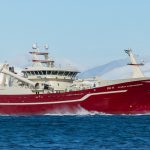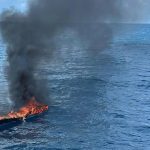According to a report by the UN Food and Agriculture Organization (FAO) and UN Environment Programme (UNEP) large numbers of ghosts nets at sea are hurting the marine lives, impacting fish stocks and posing a hazard to ships. The report also states that the problem of abandoned, lost or otherwise discarded fishing gear (ALDFG) is getting worse due to the increased scale of global fishing operations and the introduction of highly durable fishing gear made of long-lasting synthetic materials.
The report indicate that abandoned, lost or discarded fishing gear in the oceans makes up around 10 percent (640 000 tonnes) of all marine litter. It is mentioned that most fishing gear is not deliberately discarded but is lost in storms or strong currents or results from “gear conflicts.”
Ichiro Nomura, FAO Assistant Director-General for Fisheries and Aquaculture, suggest the solutions that the amount of fishing gear remaining in the marine environment will continue to accumulate and the impacts on marine ecosystems will continue to get worse if the international community doesn’t take effective steps to deal with the problem of marine debris as a whole.
Nomura told that different strategies for addressing the problem must occur on multiple fronts, including prevention, mitigation, and curative measures. Achim Steiner, UN Under-Secretary General and UNEP Executive Director, said that there are many ‘ghosts in the marine environment machine’ from overfishing and acidification linked with greenhouse gases to the rise in de-oxygenated ‘dead zones’ as a result of run off and land-based source of pollution.
The FAO/UNEP report makes a number of recommendations for tackling the problem of ghost nets. It is mentioned that improving collection, disposal and recycling schemes. It is necessary to facilitate proper disposal of all old, damaged and retrieved fishing gears, says the report.








